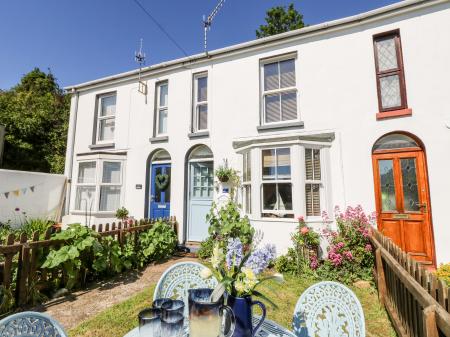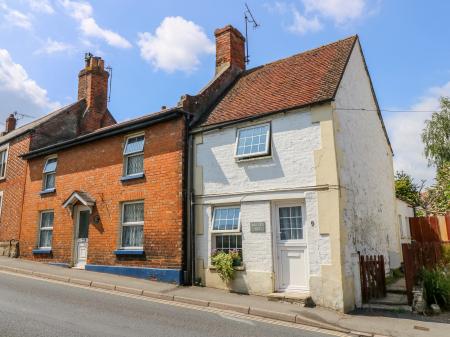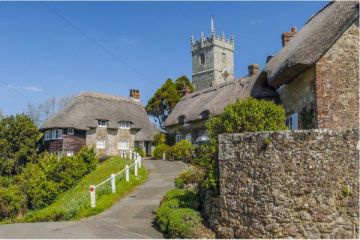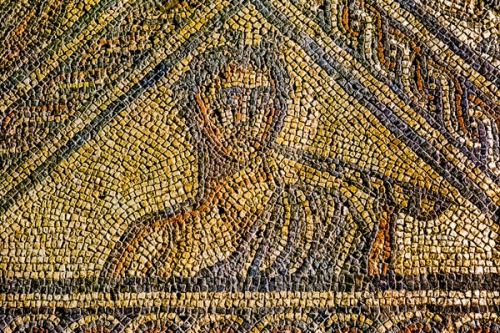
History
In 1879 a farmer named Mr Munns was digging post holes to erect a sheep pen on his land near the village of Brading. What he discovered instead was a Roman mosaic floor depicting a peculiar figure of a man with the head of a cockerel. By sheer chance, an antiquarian named Captain Thorp was in the area looking for Roman artefacts. He helped Munns uncover the entire Gallus panel.
Half the villa site was uncovered within a year, but the other half was on the neighbouring land owned by the Oglander family. Lady Oglander then purchased the first half of the site, and both halves of the villa were excavated and opened to the public. In 1994 the site was handed over to a charitable trust, and in 2004 a new 'green' visitor centre was opened.
Excavations have revealed that the earliest villa here was begun in the middle of the 1st century AD, shortly after the Isle of Wight was occupied by the 2nd Augusta Legion under Vespasian. The first villa was a very simple structure, but over the next hundred years it was expanded and developed into an imposing stone villa occupying three sides of a courtyard. The most impressive feature of this second phase of building at Brading is a series of exceptionally fine mosaics.
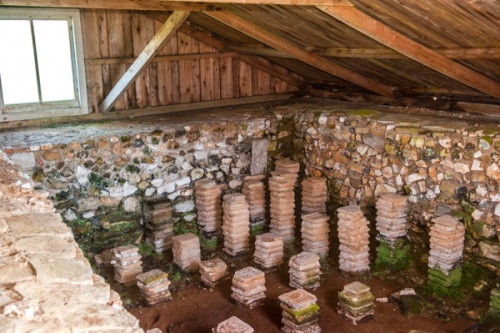
The villa was badly damaged by a fire in the 3rd century but continued in use as a farm for another century. Brading almost certainly suffered from pirate raids in the 340s AD, but we know it was still occupied in AD 395. The site was then used as a grain store before falling out of use completely in the 5th century.
A dozen rooms have been uncovered. It is not certain what all the rooms were used for, but the largest room, dubbed the 'Audience Chamber', was probably used to entertain important guests. Curiously, there does not seem to be a kitchen in the main building. This was probably located in an out-building due to fear of fire.
Five of the rooms have mosaic floors, and both the quality of the mosaics and the subject matter suggest that the owners were both wealthy and educated. There are numerous geometric designs, and one mosaic features Bacchus, while another depicts Orpheus, the god of the underworld.
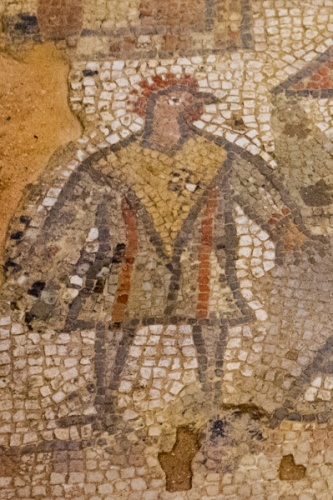
The Cockerel-Headed Man
The most famous mosaic depicts a man with the head of a cockerel, dressed as a Lanista, or trainer of gladiators. Various theories have been put forward to suggest what the image is meant to represent. It might simply be a fantastic animal figure or a depiction of the Gnostic god known as Abraxas. It might be a simple visual pun lampooning a gladiator named Gallus, which translates as 'cockerel'. It might even be making fun of Constantius Gallus (Eastern Emperor from 351–354).
The largest mosaic shows a complex blend of images including Medusa, gods and goddesses, and farming scenes.
There are remains other buildings beyond the main villa. A farmhouse stood to the north of the villa, where estate workers may have lived. You can see the remains of a hypocaust system here. Foundation walls are all that remain of a granary and storage rooms on the south wing.
One fascinating feature is a water feature known as a Nymphaeum, found outside the villa and now moved inside the visitor centre. In the grounds is a recreation of a Roman garden, planted with species of herbs and flowers known to have been used in the Roman period.
Summing up
Our family has visited Brading Villa twice, and each time I've come away amazed. The mosaics at Brading are simply stunning. The Audience Chamber mosaic, in particular, is an astonishing work of art. The famous cockerel-headed man will naturally draw attention, especially from younger visitors, but that is really just one of many, many examples of exceptionally good Roman workmanship throughout the villa.
At first glance, the modern visitor centre seems out of place, but actually it provides an excellent visiting experience, and the way they've incorporated 'green' concepts into the centre is a lesson to other visitor attractions. This truly is one of the most impressive Roman sites in Britain, and well worth a visit.
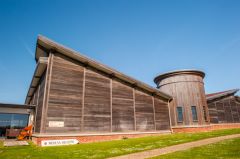
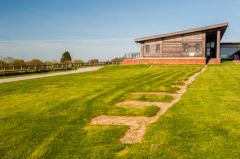
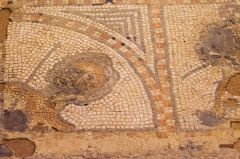
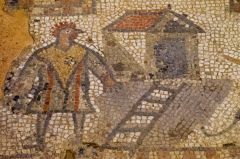
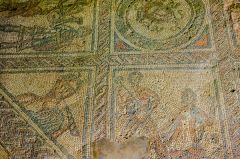
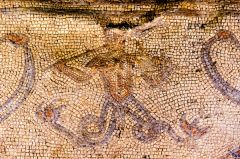
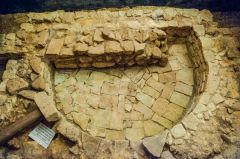
 We've 'tagged' this attraction information to help you find related historic attractions and learn more about major time periods mentioned.
We've 'tagged' this attraction information to help you find related historic attractions and learn more about major time periods mentioned.